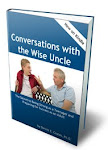People who are unwilling to keep an open mind are like that. They control the intellectual key that lets nonresident information in, and they don't let strangers in.
Twenty years ago, 360-degree feedback surveys - which make it easy for you to get feedback from the people who work around you - were different than they are today. They were called “assessment instruments” and were designed exclusively for higher levels of management. They were called instruments because the early 360-degree feedback tools were modeled after psychological tests. They had a rigid set of items that the publishers claimed had been researched to correlate to several “constructs,” or factors of leadership. The value of the feedback was based on the quality of the research. Processing the feedback was done off-site. You had to scan paper forms, check them and send them to a central processing facility. The service was very expensive.
At Performance Support Systems, we took an outside-the-box approach to this technology. We felt that 360-degree feedback was so useful that everyone in the organization should be able to benefit from it. Why restrict 360-degree feedback to leaders? All employees need feedback.
This meant that the process had to be much less expensive to administer. We also felt that a rigid set of survey questions didn’t make sense. Battalion commanders don’t lead the same way that sales managers do. Ministers lead their congregations differently than project managers lead their teams. In other words, an assessment needs to be validated locally and customized to fit the culture.
So we developed a radically new approach. We created a user-friendly system called 20/20 Insight that an organization could purchase and administer locally. This meant that scanners were no longer needed, which made administration ten times faster and cheaper. The software came with a huge library of generic straw-man assessment sets and allowed easy do-it-yourself customization so organizations could align surveys with their local competency models. The concept of researched constructs in a rigid instrument became an outmoded, wrong-headed approach. The purpose of 360-degree feedback was to tell someone what coworkers thought about their work behavior, so the recipient could decide whether to work on improving a given area—not to measure “traits,” as in psychological testing.
This was an entirely new approach to 360-degree feedback. We believed it made more sense and would lead to a much wider use of performance feedback, which would be a boon to human resource development (HRD). And in the end, our vision proved to be the way of the future. While a few of these expensive old-style “instruments” still exist, they aren’t used much anymore. Today there are nearly 100 different feedback survey services on the market, all designed after the 20/20 Insight model.
But back in 1994, it was amazingly difficult to talk about 20/20 Insight to HRD professionals. Their mindset about feedback was conditioned by the old paradigm. They would say, “Show me your research.” And we would answer, “This isn’t a psychological test. The question of validity is different. No survey can be valid for every organization. The questions are used to give feedback about individual behaviors, not to create constructs. The questions are based on decades of experience training leaders and on our thorough search of the literature. To make them valid, we make it easy for users to customize them based on how their unique organizations operate.”
Our approach to feedback was so new that it conflicted with how HR professionals thought about it. To understand the value of 20/20 Insight, they would have to open their minds to a new way of thinking. A few were able to do this right away. They became customers. For others, it took longer. Many were never able to grasp the new concept. They continued to pay ten times as much for feedback that was limited in its usefulness.
But that was a long time ago. The new paradigm of the mid-90s is now the old paradigm. It no longer takes an open mind to comprehend 20/20 Insight.
The wiser you are, the more you'll seek the wisdom of others.
Post by Dennis E. Coates, Ph.D., Copyright 2010. Building Personal Strength .







No comments:
Post a Comment